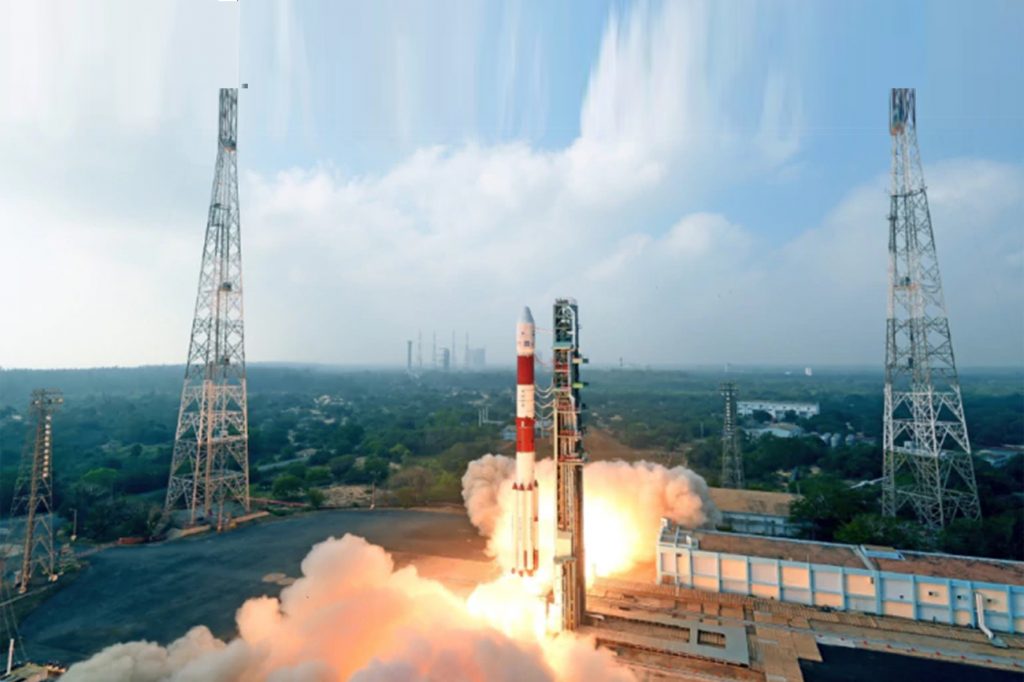Nikunja Bihari Sahu
After the Vikram Lander of Chandrayaan-2 crash landed while making a soft descent on Moon, ISRO bounced back to demonstrate its capability with the success of Cartosat-3, November 27. The satellite is India’s most advanced Earth imaging satellite built so far; it has a panchromatic camera that delivers ground resolution of 0.25 metres (25 cm), which allows it to conduct satellite imaging with the highest resolution than ever before. The satellite is to replace the existing IRS series satellites and address increased user demand for large-scale urban planning, rural resource and infrastructure development, coastal land use and land cover. The implications of the launch are many: First, it has proved beyond doubt the capability of PSLV C-47 rocket, which placed the satellite in orbit in its 49th space venture.
Second, it also launched 13 US nano satellites, which have opened a new avenue for ISRO’s ambitious commercial space programme. With this, ISRO has launched 310 foreign satellites.
Third, its spatial resolution is the highest in the world, that is 25 cm, a marked improvement over its predecessor Cartosat-2, which is nearly 100 cm. This means it can pick up an object of 25 cm on Earth from a height of about 500 km. Fourth, this will boost India’s Gaganyaan programme slated for 2022 which proposes to take three Indian astronauts, including a woman, into space. Fifth, the success following the failure of Chandrayaan-2 comes as a confidence booster to our scientists and engineers to go ahead with more advanced and challenging space programmes.
ISRO has several important missions to accomplish in the coming days. The Aditya-L1 mission is ISRO’s probe to study the Sun’s corona and atmosphere. The mission involves placing a 400 kg class space telescope into an orbit 1.5 million km from the Earth to study the three layers of the sun, the photosphere, the chromospheres and the corona.
India’s second mission to Mars, the Mars Orbiter-2, is slated to be launched between 2022 and 2023. ISRO may also plan for Chandrayaan-3, which is expected to achieve the unfinished task of its predecessor. About 2025, India plans to send an observatory to space, which will be a follow-up of Astrosat-1, India’s first dedicated multi-wavelength space telescope aimed at looking at the origin of the universe and discover new planets.
By 2023, ISRO is planning a mission to Venus by flying a spacecraft around 400 km over its surface to understand its formation, its atmosphere and its interaction with solar winds. India also aims to launch a space station by 2025, which will take the place of the existing International Space Station (ISS) once it is decommissioned in 2018.
Dr Vikram Sarabhai, the Father of India’s space programme, was the first to understand the role and importance of space technology in the nation’s development. It was under his guidance that ISRO was formed in 1969 with the goal to explore the frontiers of space. Throughout the years, ISRO has upheld its mission of bringing space to the service of the common man and contributing to the cause of national progress and development. In the process, it has become one of the six largest space agencies of the world.
It is expected that new technologies developed by ISRO during its various missions would directly benefit common people or industries, contributing to the elevation of the quality of life and national prosperity. To illustrate how space technologies benefit society, the design of a space shuttle fuel pump developed by NASA can be taken for example; it was later used as the basis for the design for a heart pump for implantation in critically ill young patients. The successful launch of Cartosat-3 by ISRO is a step forward to realise some such cherished goals.
The writer is Education Officer, Regional Science Centre, Bhopal.
